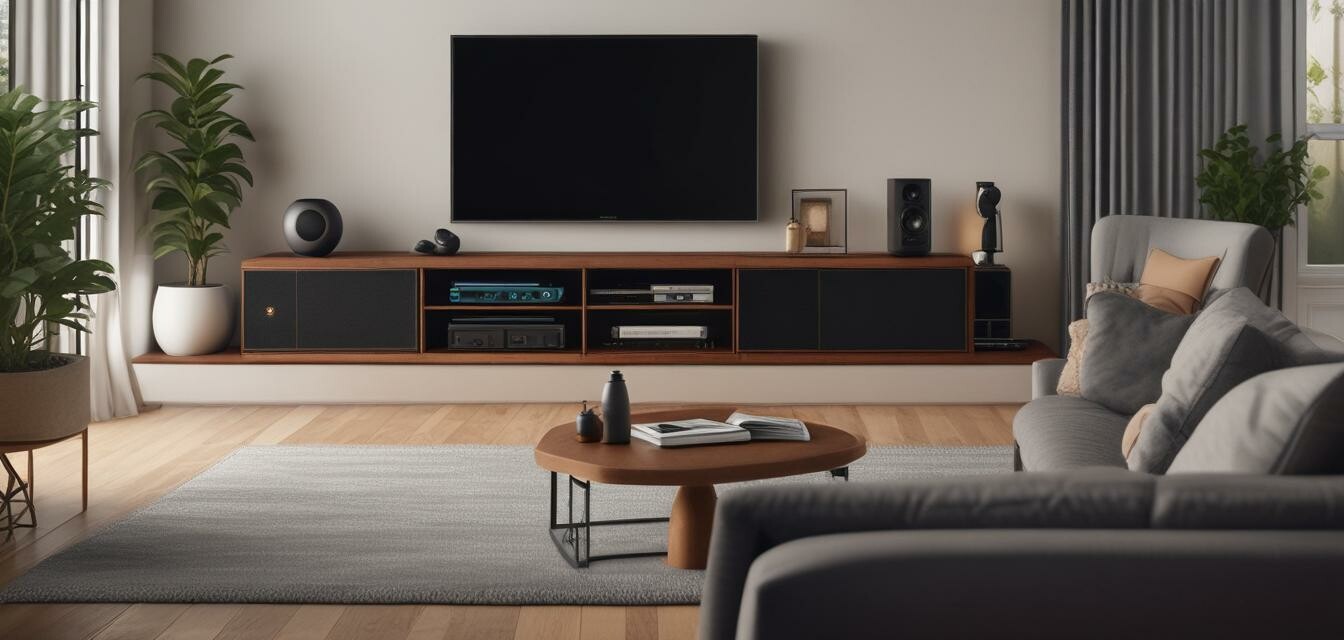
How to Maximize Your Smart Home Audio Setup
Key Takeaways
- Consider room acoustics when placing speakers.
- Utilize multi-room audio systems for seamless sound.
- Integrate voice assistants for easy control over your audio devices.
- Experiment with equalizer settings for optimal sound quality.
- Regularly update software for smart devices to enhance performance.
In today’s world of technology, creating the perfect smart home audio setup can enhance your entertainment experience significantly. This guide will help you optimize your audio system to achieve superior sound quality and seamless operation.
Understanding Your Smart Home Audio System
A smart home audio system can include various gadgets ranging from wireless speakers to voice-controlled assistants. Understanding the components of your audio system and their integrations is crucial for maximizing their potential.
Key Components of a Smart Audio System
| Component | Description |
|---|---|
| Speakers | Devices that produce sound; can be wired or wireless. |
| Subwoofers | Specialized speakers for low-frequency sounds. |
| Smart Assistants | Devices like Google Home or Amazon Echo for voice control. |
| Audio Receivers | Devices that manage audio signals and amplify sound. |
| Streaming Services | Platforms that provide audio content, accessible through smart devices. |
Optimizing Your Setup
Now that you understand the key components, let’s explore how to optimize each element of your smart home audio system.
1. Speaker Placement
Proper placement of speakers is essential for achieving improved sound quality. Here are some tips:
- Position speakers at ear level for the best listening experience.
- Avoid placing speakers close to walls to reduce unwanted reflections.
- Make use of acoustic panels to dampen sound reflections in your room.
2. Multi-Room Audio
Multi-room audio systems allow you to play music in different rooms simultaneously or individually. Here are some popular options:
- Sonos Wireless System
- Amazon Echo with Multi-Room Music
- Google Nest Audio and Chromecast
3. Voice Control Integration
Voice assistants provide a hands-free way to control your audio devices. Ensure your system supports:
- Voice commands to play, pause, and skip tracks.
- Creating playlists by simply asking your assistant.
- Controlling smart speakers and devices throughout the home.
4. Utilizing Equalizer Settings
Most smart audio systems come equipped with equalization settings. Adjust these to:
- Enhance treble and bass to suit your audio preference.
- Compensate for any room acoustics that may distort sound.
- Save custom profiles for different genres or listening experiences.
5. Keeping Software Updated
Quality and performance can degrade without regular updates. Here’s how to stay current:
- Set your devices to update automatically when possible.
- Regularly check the manufacturer’s site for manual updates.
- Read the change logs to understand what new features or fixes have been added.
Featured Product: Laresar L6 Pro Robot Vacuum Cleaner
Laresar L6 Pro Robot Vacuum Cleaner
With powerful suction and smart mapping, this vacuum is ideal for pet hair and provides thorough cleaning for your smart home.
Learn MoreAdditional Tips for a Great Audio Experience
Beyond equipment and settings, consider these extra tips:
Beginner's Section
- Experiment with playlists across different genres to test your setup.
- Utilize remote control apps for easy access and modifications.
- Join audio forums for community advice and the latest audio technology news.
Conclusion
By understanding the intricate elements of your smart home audio setup and optimizing them, you can enjoy a significant enhancement in sound quality and versatility. Always explore new features and advancements in technology to keep your audio experience fresh and enjoyable.
Pros
- Improved sound quality and versatility.
- Seamless control with voice integration.
- Dependent on streaming services for diverse content.
Cons
- Initial setup can be challenging for beginners.
- Requires ongoing software updates to maintain performance.
- Potential compatibility issues with older devices.
Explore Related Resources
For more information on optimizing your smart home gadgets, check out these links:

